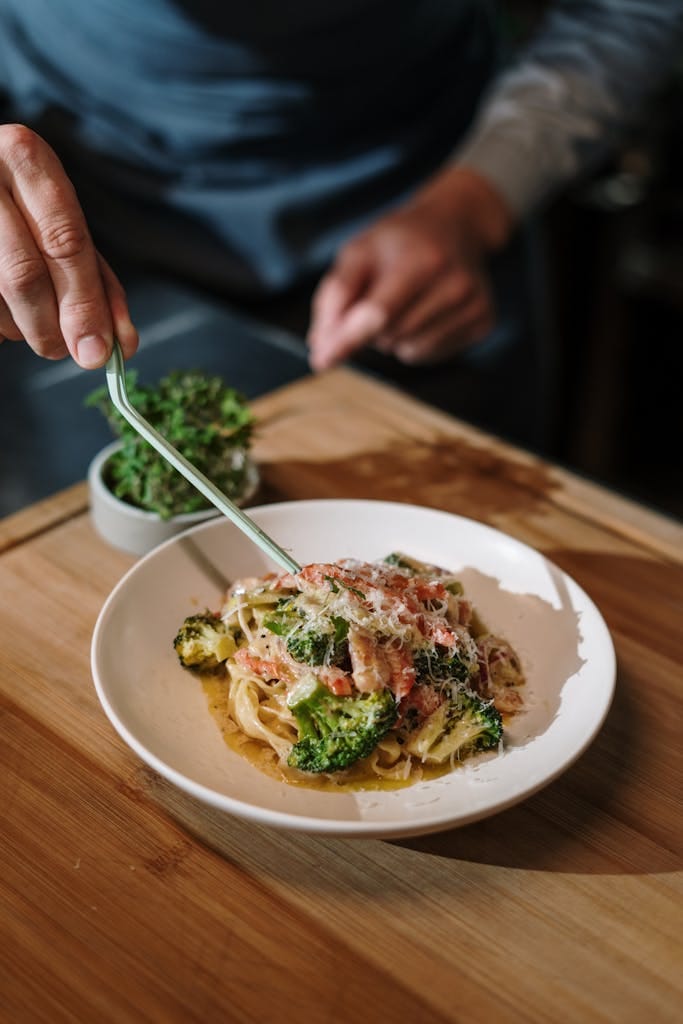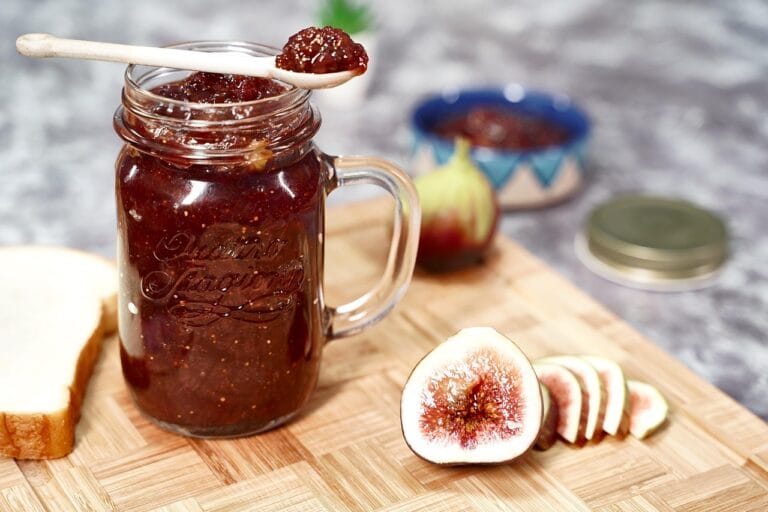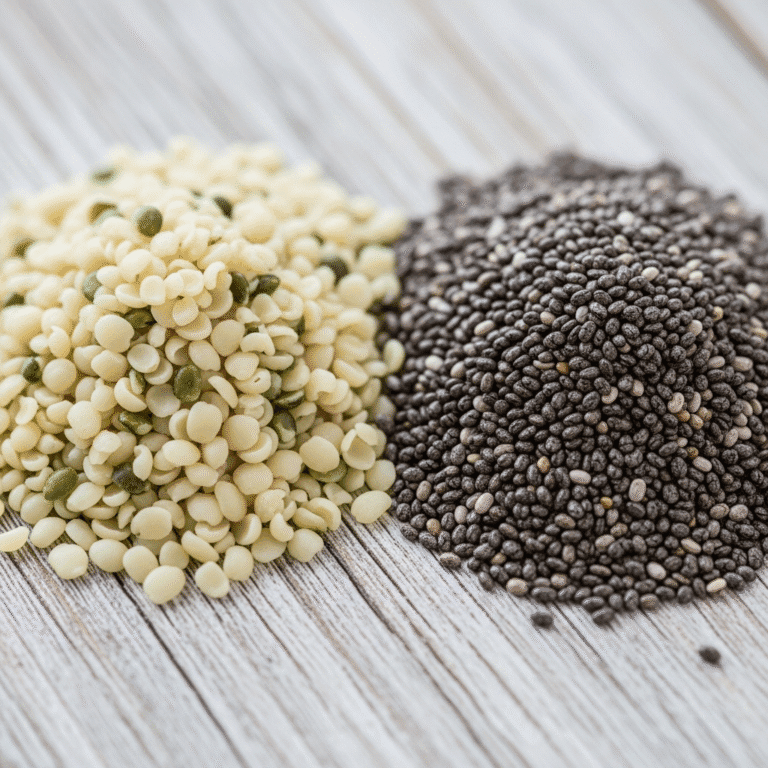FREE SHIPPING OVER $50
4 Chefs Reveal the Healthiest Way to Cook Pasta—This Changes Everything!
Pasta gets a bad rap. We’ve all heard it: “Carbs are evil!” or “It’s just empty calories!” But here’s the truth—pasta itself isn’t the problem. It’s how we cook it. I asked four top chefs (who also happen to be nutrition nerds) to spill their secrets for transforming pasta into a nutrient-packed, blood-sugar-friendly powerhouse. Spoiler: You’ll never boil noodles the same way again.

1. Chef Marco Rossi: “Stop Overcooking! Al Dente Isn’t Just for Italians”
Al dente pasta has a lower glycemic index (GI) than mushy noodles. A study found that al dente spaghetti digests slower, causing a 40% smaller blood sugar spike compared to overcooked pasta.
Step-by-Step Hack:
- Undercook by 2 minutes: Check the package’s “al dente” time and subtract 2 minutes.
- Test the bite: Perfect al dente pasta should have a firm center (no crunch) and resist slightly when chewed.
- Finish in sauce: Transfer pasta to the sauce pan with a splash of starchy pasta water. Simmer 1–2 minutes to absorb flavors without overcooking.
Pro Tip: Use a timer! Even 60 seconds too long can turn healthy pasta into a glucose bomb.
2. Chef Lena Park: “Swap 50% of Noodles for Veggie ‘Pasta’—You Won’t Taste the Difference”
Replacing half your pasta with spiralized veggies (such as zucchini, carrots, or sweet potato) reduces calorie intake while increasing fiber, vitamins, and antioxidants. A study published in The Journal of Nutrition found that pasta structure influences post-meal blood glucose and insulin response, with lower glycemic effects compared to other durum semolina products.
Step-by-Step Hack:
- Spiralize veggies first: Use a spiralizer or buy pre-spiralized packs.
- Salt and drain: Sprinkle with salt, let sit 10 minutes, then squeeze out excess water to prevent sogginess.
- Mix post-cooking: Cook regular pasta al dente, then toss with raw veggie noodles and hot sauce. The residual heat softens veggies slightly.
Pro Tip: Zucchini works for light sauces; heartier options like sweet potato noodles hold up to pesto or ragù.
3. Chef Antoine Dubois: “Cool Your Pasta Overnight—Resistant Starch is a Game-Changer”
Cooling cooked pasta increases resistant starch—a fiber-like carb that feeds gut bacteria and may reduce calorie absorption by 10–12%.
Step-by-Step Hack:
- Cook, rinse, refrigerate: After boiling, rinse pasta under cold water to stop cooking. Store in the fridge overnight.
- Reheat wisely: Sauté chilled pasta in olive oil or broth for 2–3 minutes. Retains resistant starch better than microwaving.
- Pair with acid: Add lemon juice or vinegar—acid helps preserve resistant starch during reheating.
Pro Tip: Works best with whole-grain or legume-based pasta (e.g., chickpea or lentil), which have 3x more resistant starch than white pasta.
4. Chef Priya Kapoor: “Sauce Smart—Fat + Fiber = Flavor Without the Crash”
Pairing pasta with healthy fats (like olive oil) and fiber (veggies, legumes) slows carb digestion, balancing blood sugar. A study suggests that low-glycemic meal components, such as fiber-rich vegetables, healthy fats, and protein, can help moderate blood sugar levels after meals
Step-by-Step Hack:
- Build a balanced sauce:
- Fat: 1 tbsp olive oil or ¼ avocado.
- Fiber: 1 cup roasted veggies or ½ cup lentils.
- Acid: 1 tbsp lemon juice or balsamic vinegar.
- Blend for creaminess: Puree cooked cauliflower or white beans into sauces instead of heavy cream.
- Add protein: Stir in grilled chicken, shrimp, or tofu for sustained energy.
Pro Tip: Grate a small amount of Parmesan on top—its umami enhances flavor, letting you use less salt.
The Hidden Nutrition Upgrade: Why These Hacks Work
- Glycemic Control: Al dente pasta + cooling + fiber lowers the meal’s glycemic load, preventing energy crashes.
- Gut Health Boost: Resistant starch from chilled pasta feeds beneficial bacteria, linked to improved immunity and digestion.
- Nutrient Density: Veggie swaps add vitamins A, C, and K—nutrients absent in traditional pasta.
Debunking 3 Pasta Myths (So You Can Eat Guilt-Free)
- Myth: “Pasta is Fattening”
- Fact: A 1-cup serving of cooked pasta is just 220 calories. Overeating comes from oversized portions and heavy sauces.
- Myth: “Gluten-Free Pasta is Healthier”
- Fact: Unless you have celiac disease, gluten-free pasta often lacks fiber and has more additives. Stick to whole-grain or legume-based options.
- Myth: “You Need Creamy Sauces for Flavor”
- Fact: Blended veggies, herbs, and spices (like roasted garlic + rosemary) create rich flavors without the dairy overload.
5 Quick Tweaks for Healthier Pasta Nights
- Salt the Water Like the Sea: Properly salted water (1 tbsp per quart) seasons pasta from within, reducing the need for salty sauces.
- Go 50/50 on Cheese: Mix nutritional yeast with Parmesan for a cheesy flavor with extra B vitamins.
- Add Greens Last: Stir baby spinach or arugula into hot pasta—they wilt instantly, adding nutrients without bitterness.
- Toast Your Noodles: Sauté dry pasta in olive oil for 2 minutes before boiling. Enhances nutty flavor and reduces stickiness.
- Freeze Individual Portions: Pre-portion cooked pasta into ½-cup servings to avoid overeating.
Conclusion
Pasta isn’t the enemy—it’s a blank canvas for nutrition genius. Use these chef-approved hacks to turn your spaghetti into a fiber-rich, blood-sugar-friendly meal that’s as good for your body as it is for your taste buds. Now pass the (whole-grain) penne!
Related Articles
- Stop Buying the Wrong Milk: These 10 Options Are Healthiest and Highest in Protein
- Milk vs. Water for Protein Shakes: Which Helps Build More Muscle?
- We Tried 17 Protein Powders—These 7 Are Actually Worth Your Money
- Try These 5 High-Protein Smoothie Ingredients Instead of Protein Powder
- This High-Protein Snack Can Help Lower Your Cholesterol, Say Dietitians



